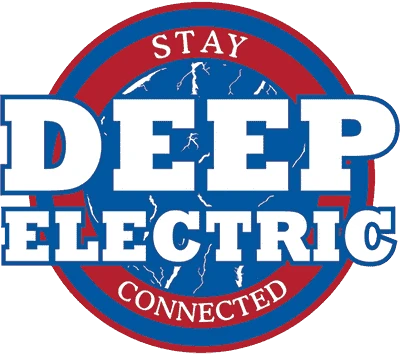If your circuit breaker keeps tripping, it can be both confusing and frustrating. One moment everything is working fine, and the next—boom—your lights go out, and appliances shut off. But did you know that a tripping breaker isn’t just annoying? It could be a warning sign.
In fact, electrical issues are among the top five causes of house fires, according to the U.S. Fire Administration. So if you’re tired of flipping the switch back on or constantly searching “troubleshoot no electricity near me,” it’s time to look into what’s really causing the issue.
Let’s go over seven common reasons why your breaker keeps tripping, and what you can do about it.
1. Circuit Overload
The most common reason a breaker trips is an overloaded circuit. This happens when you're running too many high-energy devices on one circuit. Think about your kitchen—if your toaster, microwave, and blender are all on at once, that circuit might be working too hard.
What to do: Unplug some items or move them to a different outlet. You can also ask an electrician to add more circuits if your home doesn't have enough to support your daily use.
2. Short Circuit
A short circuit is more serious. It occurs when a hot wire touches a neutral wire, causing a surge of electricity. When this happens, the breaker immediately trips to prevent further damage. You might notice a burning smell or even black marks on the outlet.
What to do: This isn’t something to fix on your own. It’s best to get a home electrical inspection near you to figure out where the problem is and fix it safely.
3. Ground Fault
Similar to a short circuit, a ground fault occurs when a hot wire touches a ground wire or metal part of a box. This is common in wet areas like kitchens, bathrooms, or outdoor outlets.
What to do: Call an electrician to diagnose and repair it. They may also recommend installing GFCI outlets in areas where moisture is common.
4. Old or Worn-Out Wiring
If your home is more than 20-30 years old, your electrical system might not be able to handle today’s devices. Older wiring can break down over time, which leads to overheating and frequent tripping.
What to do: Reach out for a home electrical inspection near me. If needed, your electrician may suggest upgrading your wiring to meet modern safety standards.
5. Faulty Appliances
Sometimes the problem isn’t in the wall—it’s in what’s plugged into it. An aging appliance like a fridge, space heater, or vacuum can draw more power than it should. This causes the breaker to trip when that item is turned on.
What to do: Try unplugging one device at a time to figure out which one might be the culprit. If the issue stops after removing an item, that appliance might need to be replaced or repaired.
6. Breaker Is Failing
Circuit breakers aren’t meant to last forever. If one particular breaker keeps tripping—even when you’re not using many devices—it could be faulty.
What to do: Have an electrician check it out. Replacing an old breaker is often a quick and affordable fix that can restore safety and peace of mind.
7. Moisture Problems
Moisture is another common issue, especially in bathrooms, basements, or around outdoor outlets. Water can easily get into outlets or wiring and cause the breaker to shut off for safety.
What to do: Make sure outdoor outlets are covered and bathroom outlets are safe from water splashes. If you suspect moisture is causing the issue, don’t take chances—book a home electrical inspection near you to stay safe.
Summing Up: What to Do When the Power’s Out
Losing power can throw your whole day off. And if you’ve already tried flipping the breaker back on, but it keeps tripping, stop and think—what’s the real cause?
If you’ve been Googling “troubleshoot no electricity near me,” it’s a smart idea to call a local pro. They’ll have the right tools to check your electrical panel, wiring, outlets, and even your appliances to get to the root of the issue.



